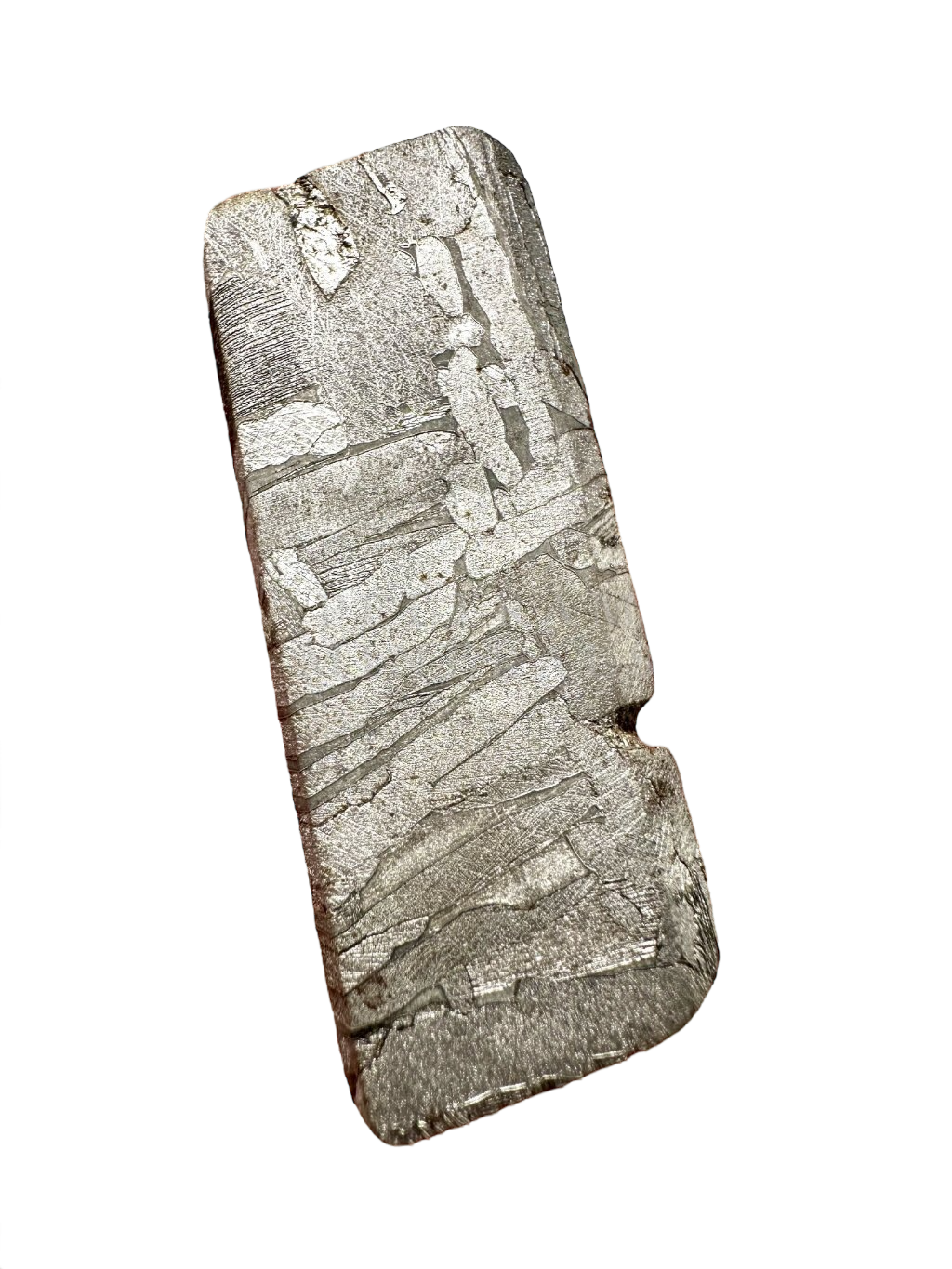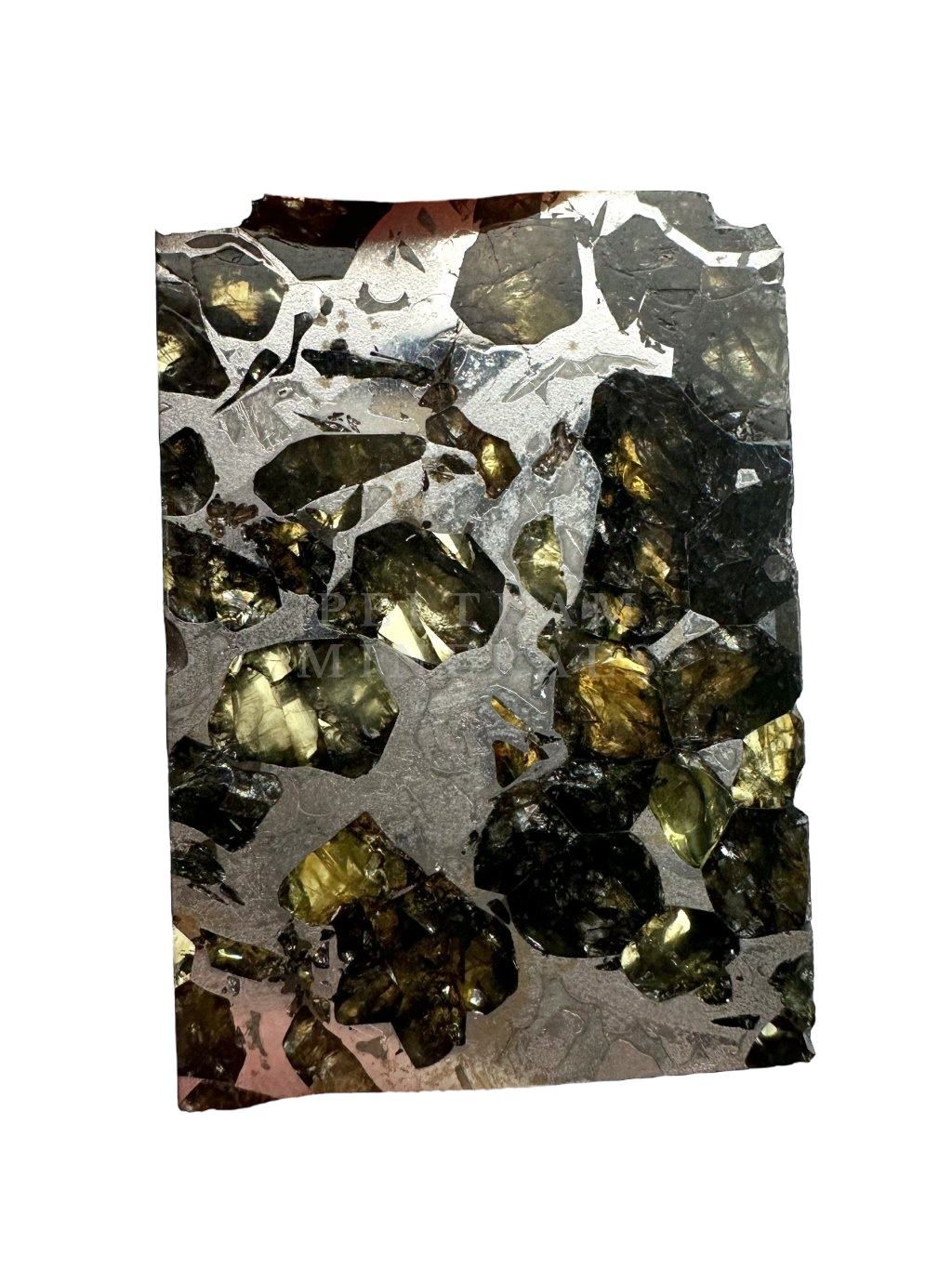Meteorite Seymchan 3,1g – Extra quality – Magadan, Russia
Type: Pallasite
Locality: Magadan, Russia
Weight: 3,1g
Dimensions: 18 x 17 x 2 mm
Year found: 1967
Total known weight: 323,3 kg
Surface treatment: cut, polished slice
Extra quality - olivines are larger, very clear and beautifully translucent
| Category: | Seymchan |
|---|---|
| By name: | Seymchan |
| ? Type: | Stony-iron |
| ? Surface treatment: | Cut |
| Packaging: | None |
Seymchan Meteorite
The Seymchan meteorite fell in the Magadan region, near the settlement of Seymchan in Russia, but the exact fall date remains unknown. It was discovered in 1967, with the first part weighing 272 kg found in June of that year, and a second piece weighing 51 kg found in October, just a few months later. In the initial study, only metallic parts of the meteorite were found, and it was classified as an iron meteorite of type IIE. It was not until 2004 during further examination that they discovered 20 % of the samples contained olivine crystals, and it was reclassified as a pallasite, a type of stony-iron meteorite.
Internal Structure and Composition
Its unusual internal structure is also remarkable. Some parts are rich in olivine inclusions, which are referred to as pallasitic parts, while others consist almost entirely of iron-nickel alloys, mainly kamacite and taenite. In the metallic part of the meteorite, polishing and acid etching can reveal characteristic Widmanstätten patterns, which form through slow cooling of the iron-nickel alloy in space. Seymchan also contains minerals such as troilite, schreibersite, and chromite.
Pure metallic part composed of kamacite and taenite
Pallasitic part with olivine inclusions


How Did It Form?
In terms of origin, the meteorite comes from a differentiated asteroid in the main belt between Mars and Jupiter, which underwent melting and material separation in the early stages of its evolution. Heavier elements (iron and nickel) settled in the core during this process, while lighter silicate minerals formed the mantle. Later collisions and dynamic processes led to the mixing of metallic and silicate components. The result is a unique meteorite that, in addition to purely metallic sections, also contains pallasitic parts full of olivine crystals.






